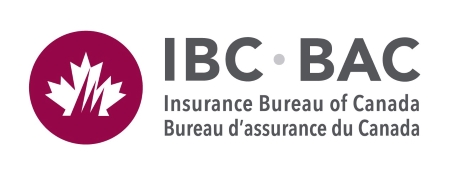IBC releases list of Ontario's top 10 stolen vehicles
Insurers continue the fight against auto theft
TORONTO, Dec. 16 /CNW/ - Insurance Bureau of Canada (IBC) released its list of Ontario's most frequently stolen vehicles today. As is the case nationally, the appearance of high-value, all-wheel/four-wheel drive models on the list demonstrates that sophisticated, organized crime rings are involved. These types of vehicles are frequently targeted by criminal organizations that strip them for parts, re-sell them to unsuspecting consumers, or export them to countries where there is a high demand for upscale vehicles that can handle rugged terrain.
Last month the federal government passed Bill S-9, Tackling Auto Theft and Property Obtained by Crime Act, which gives Canada Border Services Agency (CBSA) the authority to seize stolen vehicles intended for export.
The top 10 stolen vehicles in The top 10 stolen vehicles
Ontario are: across Canada are:
1. 2000 Honda Civic SiR 2-door 1. 2000 Honda Civic SiR 2-door
2. 1999 Honda Civic SiR 2-door 2. 1999 Honda Civic SiR 2-door
3. 2002 Cadillac Escalade 3. 2002 Cadillac Escalade 4-door 4WD
4-door 4WD 4. 2004 Cadillac Escalade 4-door 4WD
4. 2005 Cadillac Escalade 5. 2005 Acura RSX Type S 2-door
4-door 4WD 6. 1997 Acura Integra 2-door
5. 2003 Cadillac Escalade 7. 2000 Audi S4 Quattro 4-door AWD
4-door 4WD 8. 2003 Hummer H2 4-door AWD
6. 2004 Cadillac Escalade 9. 2006 Acura RSX Type S 2-door
4-door 4WD 10. 2004 Hummer H2 4-door AWD
7. 2006 Land Rover Range
Rover Sport 4-door 4WD
8. 2004 Hummer H2 4-door AWD
9. 2003 Hummer H2 4-door AWD
10. 2003 Acura RSX Type S 2-door
"IBC congratulates the federal government for cracking down on organized crime and auto theft for export, and for making the safety and security of Canadians a priority," said Rick Dubin, Vice-President, Investigative Services, IBC. "IBC will continue to work vigorously with law enforcement and government agencies across Ontario and the rest of Canada to fight auto theft and recover stolen vehicles before they leave the country."
Bill S-9 makes changes to the Criminal Code, including: making a separate offence for motor vehicle theft supported by tough sentences, creating the offence of altering, destroying or removing a vehicle identification number (VIN), and creating the offences of trafficking property obtained by crime and possession of property obtained by crime for the purpose of trafficking.
IBC in partnership with CBSA and local law enforcement agencies located at the ports of Montreal and Halifax have seized 600 stolen vehicles worth $18 million this year to date. Including vehicles that were repatriated from overseas and those recovered using licence-plate reader technology, the value of stolen vehicles recovered by IBC in 2010 jumps to $30.7 million. IBC will be arguing for the expansion of the ports program to the port of Vancouver for 2011.
Auto theft by the numbers:
- According to Statistics Canada, 108,172 vehicles were stolen in
Canada in 2009, a drop of 15% from 2008. 27,175 of those vehicles
were stolen in Ontario.
- In 2009, auto theft cost Canadian insurers $419 million; when one
adds emergency response, court, policing, legal and out-of-pocket
expenses, such as deductibles, the total cost of auto theft each year
in Canada approaches $1 billion.
"In addition to sophisticated crime rings that operate as businesses, transportation theft (or so-called 'joy riding') still exists," added Dubin. "This type of theft is committed by someone just looking for a car that's easy to steal, which can be used for transportation or to commit other crimes. The difference is that cars stolen for these purposes are often abandoned and found. Cars stolen by organized crime rings disappear."
A professional thief can steal a car in about 30 seconds, even without a key. The first nine vehicles on Ontario's most frequently stolen list do not have an approved immobilizer, which prevents thieves from starting a vehicle without the key. Some things drivers can do to help protect their vehicle include:
- Roll up car windows, lock the doors and pocket the key.
- Keep the vehicle registration certificate and proof of insurance in a
purse or wallet at all times - not in the glovebox.
- Never leave valuable objects or packages in full view. Put them in
the trunk.
- Never leave a vehicle running unattended when getting a coffee or
when the vehicle is warming up on the driveway. Approximately 20% of
stolen cars have keys in them.
- Always park in a well-lit and busy area.
- At home, park in a garage if available and lock both the garage and
car doors.
The above data regarding stolen vehicles is based on actual insurance claims information collected from companies that write almost all automobile insurance in Canada. This data can be found in the 2010 release of IBC's "How Cars Measure Up," which compares the insurance claims records of the most popular vehicle models across the country. It also lists the best and worst models according to claims made for collisions and theft. Consumers can look up the information they need before they buy a new or used car. "How Cars Measure Up" is designed to help consumers understand how theft, collision and other claims costs affect insurance premiums. For more information, visit IBC's website at www.ibc.ca and click on "How Cars Measure Up" under Popular links.
About Insurance Bureau of Canada
Insurance Bureau of Canada is the national industry association representing Canada's private home, car and business insurers. Its member companies represent 90% of the property and casualty (P&C) insurance market in Canada. The P&C insurance industry employs over 110,000 Canadians, pays more than $6 billion in taxes to the federal, provincial and municipal governments, and has a total premium base of $40 billion.
For further information: contact Ellen Woodger at 416-483-2358 or Mark Klein at 416-362-2031 ext. 4387

Share this article